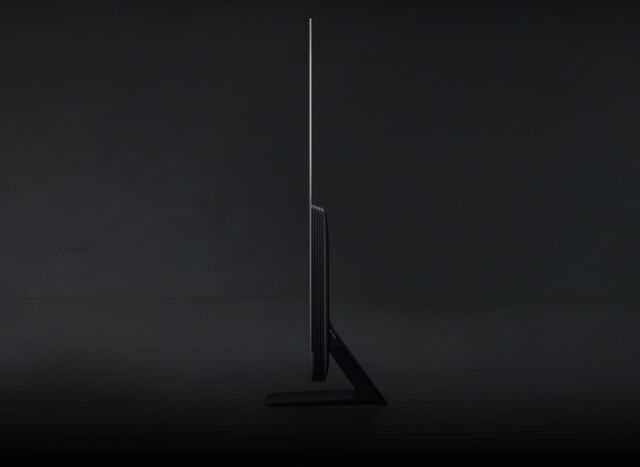
Samsung
Samsung unveiled new details for its highly anticipated QD-OLED TV on Thursday. The company’s first OLED TV in a decade will cost $2,200 for the 54.6-inch model and $3,000 for the 64.5-inch model.
Samsung hadn’t released an OLED TV since 2012, but in January the company announced its return to the market. Samsung is bypassing LG Display’s hold on OLED panels by continuing with its own OLED technology called QD-OLED. QD-OLED applies quantum dots to OLED to deliver greater color coverage that is more consistent across brightness levels, as well as more detailed highlights and enhanced shadows.
The Samsung OLED (S95B) series, as it is now called, costs more than many OLED TVs, putting it in line with LG’s high-end G-series (non-QD) OLED TVs. LG has not announced prices for its 2022 G2 TVs in the US, but in Europe the 55- and 65-inchers have been announced for Euro 2,500 (about $2,758) and Euro 3,600 (about $3,970), respectively. The LG G1 55-inch model debuted at $2,000, and the 65-inch came in at $2,800. LG’s flagship C-series, meanwhile, costs $1,250 for 55 inches.

Samsung
LED generally offers more nits of brightness than OLED. QD-OLED does not claim a brightness advantage over standard OLED, and the S95B’s spec sheet does not include a brightness specification. However, the TVs will have a “brightness booster function,” according to Samsung’s announcement. LG’s upcoming G2 TVs also have a brightness booster, which works in tandem with a heat sink to help the TVs maintain maximum brightness. The TV’s LG OLED “Evo” panels should also be brighter than your average OLED, the company says.
Looking ahead, Samsung will also have to compete with OLED EX, an upcoming OLED panel type from LG Display that claims 30 percent more brightness than standard OLED displays. We’re also still waiting for pricing for Sony’s inclusion of Samsung’s QD-OLED panel in the 55- and 65-inch A95K series.

Samsung
Samsung’s 4K OLED TV is limited to 120 Hz, unlike the sets of “Neo QLED” mini LED TVs in Samsung’s 2022 TV series, which reached 144 Hz at 4K. However, unless you’re a serious PC gamer who uses a TV as a monitor, this probably isn’t an issue.
Samsung also said the upcoming QD-OLED TVs will have “perceptional color mapping to deliver brighter, more accurate highlights”.
Like Samsung’s 2022 Neo QLED 4K and 8K TVs, the S95B series uses Samsung’s Neural Quantum 4K processor for upscaling and the Tizen operating system. Other specs revealed this week include AMD FreeSync Premium to combat screen tearing in gaming and 60W audio with Dolby Atmos.

Samsung
Samsung also announced pricing for its revamped Neo QLED TVs, starting at $3,500 for 8K, with 4K preorders starting in May. There’s also the Frame TV, which starts at $1,000.

